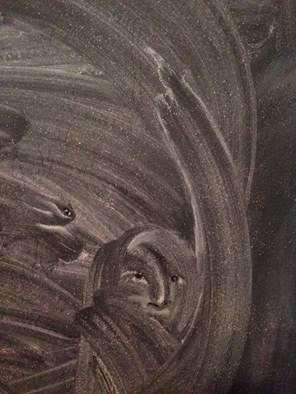“I think it is all a matter of love; the more you love a memory the stronger and stranger it becomes”
― Vladimir Nabokov
I’ve always thought there were basically two approaches to making art. There are those of us who derive inspiration from direct observation and those who prefer to harness their imaginations. But I think there is a third: those who like to respond to their media, improvising within a given structure, to come up with something that is neither based on observation, nor anything they have necessarily ever imagined. I would say most artists are some combination of these three approaches. In each approach, the aspect of memory plays a part in the process.
As a primarily observational artist, I can tell you I use my memory, particularly my short term memory, to literally re-member what I see, interpreting and re-assembling it onto the canvas. The creativity, the vision, the art is in what I choose to include or leave out from those pieces of memory I grab every time I look at my subject. The re-membering process is a delicate dance, which I personally find very compelling. The visualization and organization in the mind of the various elements is very intense, because these images only remain in the mind for the briefest of instants. I like to extend my memory of complex shapes and relationships by increasing the time I keep the image in my head, before re-creating it on the canvas. It’s like taking a deep breath and holding it.
Even those artists who primarily work from their imagination, like cartoonists or surrealist painters, are essentially re-membering an image they have seen in their mind and re-assembling it onto the canvas.
Those who prefer the responsive approach are working with memory in a different way. They are not limited by the memory of any specific image, either observed or imagined, but are completely free in the moment of creation. They may remember a similar experience, from a similar structure, but they are not necessarily trying to match the result to any image they have ever seen or experienced. They seize opportunities where they may.
When I’m doing my observational work, every glance away from my subject is a trip down memory lane. It is very easy to generalize or sanitize the images during the process of re-membering. It takes tremendous focus to interpret the raw data, as specifically as possible. But I must be diligent not to let the information become what it “should be,” but rather become more of what it is in it’s purest essence. There is nothing glib or superficial about great realism.
Some scoff at representational artists, calling them simple “copyists.” And I agree, some are. Photo-realism is really a reproduction process. I prefer there to be some give and take, something spontaneous, improvised, a dance that can only happen in the moment of execution. It is the energy of the subject captured in the paint itself. I call my style “expressive realism” because I enjoy this giving into the moment when I paint.


 Would you like to get inspiration in your inbox, rather than ads for more stuff? Welcome to ManiscalcoGallery.com
Would you like to get inspiration in your inbox, rather than ads for more stuff? Welcome to ManiscalcoGallery.com